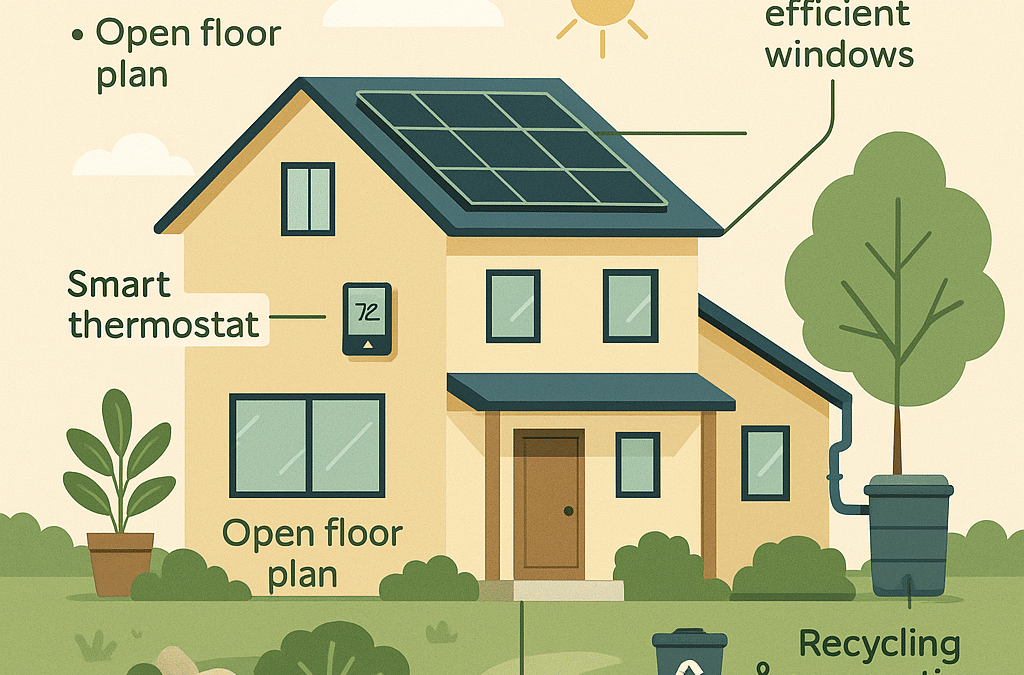Eco-friendly homes are no longer just a trend—they are becoming a standard for healthier living, lower costs, and a lighter footprint on the planet. But what exactly makes a home “eco-friendly”? It’s more than solar panels or a recycling bin; it’s about creating a living space that harmonizes with the environment while enhancing comfort and efficiency.
1. Smart Energy Use
One of the biggest indicators of an eco-friendly home is energy efficiency. This can include:
- Solar panels to generate renewable energy.
- Energy-efficient appliances with ENERGY STAR ratings.
- Smart thermostats that reduce waste by adjusting heating and cooling based on use.
- LED lighting which uses far less electricity than traditional bulbs.
These changes not only shrink your carbon footprint but also cut down monthly utility bills.
2. Water Conservation
Water is precious, especially in desert regions like Arizona. Eco-friendly homes use strategies such as:
- Low-flow faucets, showerheads, and toilets to reduce water waste.
- Xeriscaping (using native, drought-tolerant plants) instead of water-hungry lawns.
- Rainwater harvesting systems to capture and reuse water for irrigation.
3. Sustainable Materials
From construction to interior finishes, the materials used in an eco-friendly home matter. Examples include:
- Recycled or reclaimed wood for flooring and cabinetry.
- Non-toxic paints and finishes to improve indoor air quality.
- Insulation made from natural fibers like cotton, wool, or cellulose.
Choosing locally sourced materials also reduces the carbon footprint from shipping.
4. Healthy Indoor Air Quality
Eco-friendly homes prioritize the health of the people inside:
- Natural ventilation and well-placed windows for airflow.
- Air-purifying plants to filter toxins naturally.
- HEPA air filtration systems for cleaner breathing indoors.
These choices reduce exposure to allergens and harmful chemicals.
5. Smart Design & Orientation
Sometimes the greenest solutions come from thoughtful design:
- Positioning the home to maximize natural light and minimize heat gain.
- Large windows with energy-efficient glazing to brighten spaces without overheating.
- Open floor plans that promote airflow and reduce the need for constant cooling.
6. Waste Reduction & Recycling
Eco-friendly homes are designed to create less waste:
- Composting systems for food scraps.
- Built-in recycling stations to make sorting easier.
- Durable finishes that last longer and don’t need frequent replacement.
Why Eco-Friendly Homes Matter
An eco-friendly home is about balance: reducing your environmental impact while creating a healthier, more cost-effective living space. Whether you’re building from scratch, remodeling, or simply making small upgrades, every eco-friendly choice makes a difference—for your wallet, your health, and the planet.

